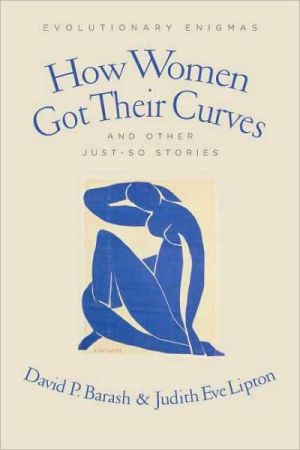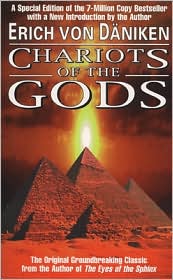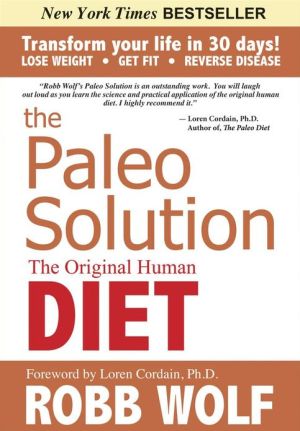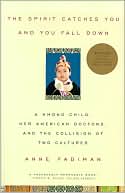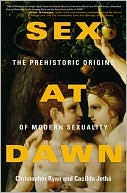How Women Got Their Curves and Other Just-So Stories: Evolutionary Enigmas
So how did women get their curves? Why do they have breasts, while other mammals only develop breast tissue while lactating, and why do women menstruate, when virtually no other beings do so? What are the reasons for female orgasm? Why are human females kept in the dark about their own time of ovulation and maximum fertility, and why are they the only animals to experience menopause?\ David P. Barash and Judith Eve Lipton, coauthors of acclaimed books on human sexuality and gender, discuss...
Search in google:
So how did women get their curves? Why do they have breasts, while other mammals only develop breast tissue while lactating, and why do women menstruate, when virtually no other beings do so? What are the reasons for female orgasm? Why are human females kept in the dark about their own time of ovulation and maximum fertility, and why are they the only animals to experience menopause?David P. Barash and Judith Eve Lipton, coauthors of acclaimed books on human sexuality and gender, discuss the theories scientists have advanced to explain these evolutionary enigmas (sometimes called "Just-So stories" by their detractors) and present hypotheses of their own. Some scientific theories are based on legitimate empirical data, while others are pure speculation. Barash and Lipton distinguish between what is solid and what remains uncertain, skillfully incorporating their expert knowledge of biology, psychology, animal behavior, anthropology, and human sexuality into their entertaining critiques. Inviting readers to examine the evidence and draw their own conclusions, Barash and Lipton tell an evolutionary suspense story that captures the excitement and thrill of true scientific detection. Publishers Weekly This husband-and-wife team, respectively an evolutionary biologist and a psychiatrist specializing in women's health, have written a delightful, thought-provoking volume on perennial questions about female biology. Each of five chapters centers on one question: why do women menstruate? why is ovulation hidden? what's the evolutionary function of the female breast? is there an evolutionary explanation for the female orgasm? and why does menopause occur? Barash and Lipton acknowledge there are no definitive answers to any of these questions. What they do so very well is offer numerous hypotheses along with ideas on how to test them. For example, they propose that the female orgasm might, among other possibilities, facilitate fertilization, serve as a copulatory reward, encourage monogamy or reduce infanticide. Along the way, they present a large amount of accessible information about biology, psychology, physiology and anatomy. Even more important, they demonstrate how scientists work to create and assess hypotheses while having a great deal of fun. They also show how science slowly but inexorably pushes back the darkness surrounding complex issues and how evolutionary theory can help us understand all aspects of human biology. Photos. (May)Copyright © Reed Business Information, a division of Reed Elsevier Inc. All rights reserved.
1.Introduction2.On Scientific Mysteries and Just-So Stories3.Why Munstruate?4.Invisible Ovulation5.Breasts and Other Curves6.The Enigmatic Orgasm7.The Menopause Mystery8.Epilogue: The Lure of the Limpopo
\ MetaPsychology - Hennie Weiss\ The book is well written and even though evolutionary biology can sometimes be difficult to comprehend, the authors do a good job in describing and explaining the various hypotheses encountered. The examples they use shed light on complex biological and evolutionary traits and adaptations.\ \ \ \ \ \ MetaPsychologyThe book is well written and even though evolutionary biology can sometimes be difficult to comprehend, the authors do a good job in describing and explaining the various hypotheses encountered. The examples they use shed light on complex biological and evolutionary traits and adaptations.\ — Hennie Weiss\ \ \ \ Publishers WeeklyThis husband-and-wife team, respectively an evolutionary biologist and a psychiatrist specializing in women's health, have written a delightful, thought-provoking volume on perennial questions about female biology. Each of five chapters centers on one question: why do women menstruate? why is ovulation hidden? what's the evolutionary function of the female breast? is there an evolutionary explanation for the female orgasm? and why does menopause occur? Barash and Lipton acknowledge there are no definitive answers to any of these questions. What they do so very well is offer numerous hypotheses along with ideas on how to test them. For example, they propose that the female orgasm might, among other possibilities, facilitate fertilization, serve as a copulatory reward, encourage monogamy or reduce infanticide. Along the way, they present a large amount of accessible information about biology, psychology, physiology and anatomy. Even more important, they demonstrate how scientists work to create and assess hypotheses while having a great deal of fun. They also show how science slowly but inexorably pushes back the darkness surrounding complex issues and how evolutionary theory can help us understand all aspects of human biology. Photos. (May)\ Copyright © Reed Business Information, a division of Reed Elsevier Inc. All rights reserved.\ \ \ \ \ Library JournalBarash (evolutionary biologist & psychology, Univ. of Washington) and his wife, Lipton, a clinical psychiatrist specializing in women's health, have written several books considering men and women in the light of evolution (The Myth of Monogamy; Making Sense of Sex); here, they concentrate on females. By examining the many explanations, which they call "just-so stories," for various female enigmas (menstruation, ovulation, breasts and hips, orgasm, and menopause) and putting forth the research that may or may not support those explanations, the authors present an intriguing exercise in how evolutionists think and develop their ideas. Older titles addressing these female characteristics include Sarah Hrdy's Mother Nature: Maternal Instincts and How They Shape the Human Species and Elaine Morgan's The Descent of Woman, but this new title updates the research and incorporates some new ideas. Recommended for larger university and public library collections of women's studies materials.\ —Margaret Henderson\ \ \
